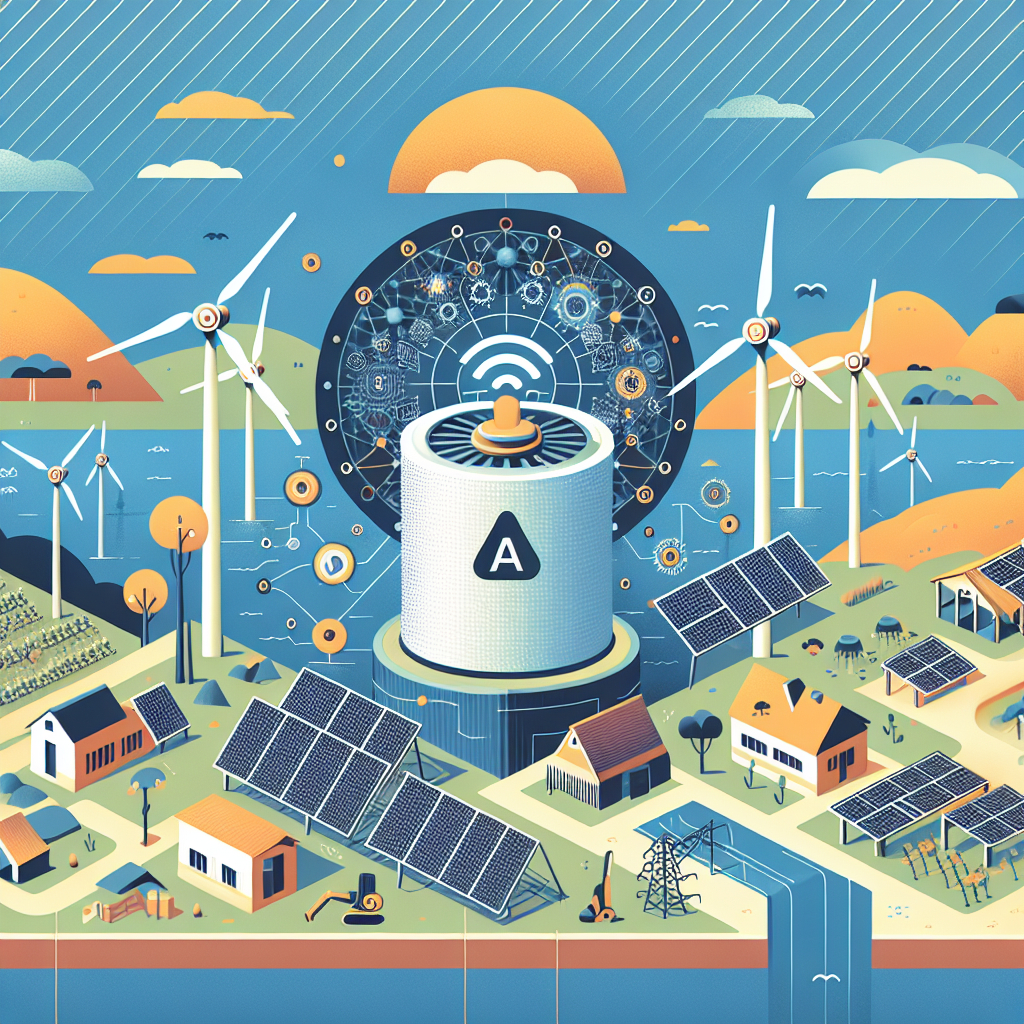Advantages of AI in Enhancing Energy Access in Developing Countries with Renewables
Introduction
Access to reliable and affordable energy is crucial for economic development, social progress, and environmental sustainability. However, many developing countries face significant challenges in providing energy access to their populations, especially in remote and rural areas. The use of renewable energy sources, such as solar, wind, and hydro power, has the potential to address these challenges and provide clean and sustainable energy solutions. In recent years, artificial intelligence (AI) has emerged as a powerful tool for optimizing the generation, distribution, and consumption of renewable energy. This article explores the advantages of AI in enhancing energy access in developing countries with renewables.
Advantages of AI in Enhancing Energy Access
1. Improved Energy Efficiency
AI technologies, such as machine learning algorithms and predictive analytics, can optimize the performance of renewable energy systems and improve energy efficiency. By analyzing data on weather patterns, energy demand, and system performance, AI can help optimize the operation of renewable energy systems, such as solar panels and wind turbines, to maximize energy production and minimize waste. This can lead to significant cost savings and increased energy access in developing countries.
2. Enhanced Grid Stability
One of the challenges of integrating renewable energy sources into the grid is the variability of these energy sources, such as solar and wind power. AI can help predict and manage this variability by forecasting energy generation and demand, and optimizing the distribution of energy across the grid. By balancing supply and demand in real-time, AI can enhance grid stability and reliability, ensuring a consistent and uninterrupted energy supply for consumers in developing countries.
3. Remote Monitoring and Maintenance
AI-enabled sensors and monitoring systems can remotely monitor the performance of renewable energy systems in remote and rural areas, where access to maintenance services may be limited. By detecting and diagnosing issues in real-time, AI can enable proactive maintenance and repair, reducing downtime and ensuring the continuous operation of renewable energy systems. This can improve energy access in developing countries by increasing the reliability and availability of renewable energy sources.
4. Energy Access for Off-Grid Communities
AI-powered microgrid systems can provide reliable and affordable energy access to off-grid communities in developing countries. By optimizing the generation, storage, and distribution of energy within the microgrid, AI can enable communities to meet their energy needs independently of the main grid. This can improve energy access in remote and rural areas where grid infrastructure is lacking or unreliable, empowering communities to access clean and sustainable energy solutions.
5. Cost-Effective Energy Solutions
AI can optimize the design and deployment of renewable energy systems, reducing costs and improving the affordability of energy solutions in developing countries. By analyzing data on energy demand, resource availability, and system performance, AI can identify the most cost-effective solutions for generating and distributing energy, such as the optimal placement of solar panels or wind turbines. This can lower the upfront investment and operational costs of renewable energy systems, making them more accessible to consumers in developing countries.
FAQs
Q: How can AI help address the energy access challenges in developing countries?
A: AI can optimize the performance of renewable energy systems, enhance grid stability, enable remote monitoring and maintenance, provide energy access for off-grid communities, and offer cost-effective energy solutions in developing countries.
Q: What are some examples of AI applications in enhancing energy access in developing countries?
A: Examples include AI-enabled microgrid systems, predictive analytics for energy forecasting, remote monitoring and maintenance of renewable energy systems, and optimization of energy distribution and storage.
Q: How can AI improve the affordability of renewable energy solutions in developing countries?
A: AI can optimize the design and deployment of renewable energy systems, reducing costs and making them more affordable for consumers in developing countries. By analyzing data on energy demand, resource availability, and system performance, AI can identify the most cost-effective solutions for generating and distributing energy.
Q: What are the benefits of using AI in enhancing energy access in developing countries?
A: The benefits include improved energy efficiency, enhanced grid stability, remote monitoring and maintenance, energy access for off-grid communities, and cost-effective energy solutions. AI can help address the energy access challenges in developing countries and provide clean and sustainable energy solutions for their populations.
Conclusion
AI has the potential to revolutionize the energy sector and enhance energy access in developing countries with renewable energy sources. By optimizing the performance of renewable energy systems, enhancing grid stability, enabling remote monitoring and maintenance, providing energy access for off-grid communities, and offering cost-effective energy solutions, AI can address the energy access challenges in developing countries and empower their populations to access clean and sustainable energy solutions. As AI technologies continue to advance, their role in enhancing energy access in developing countries with renewables is expected to grow, driving economic development, social progress, and environmental sustainability.

